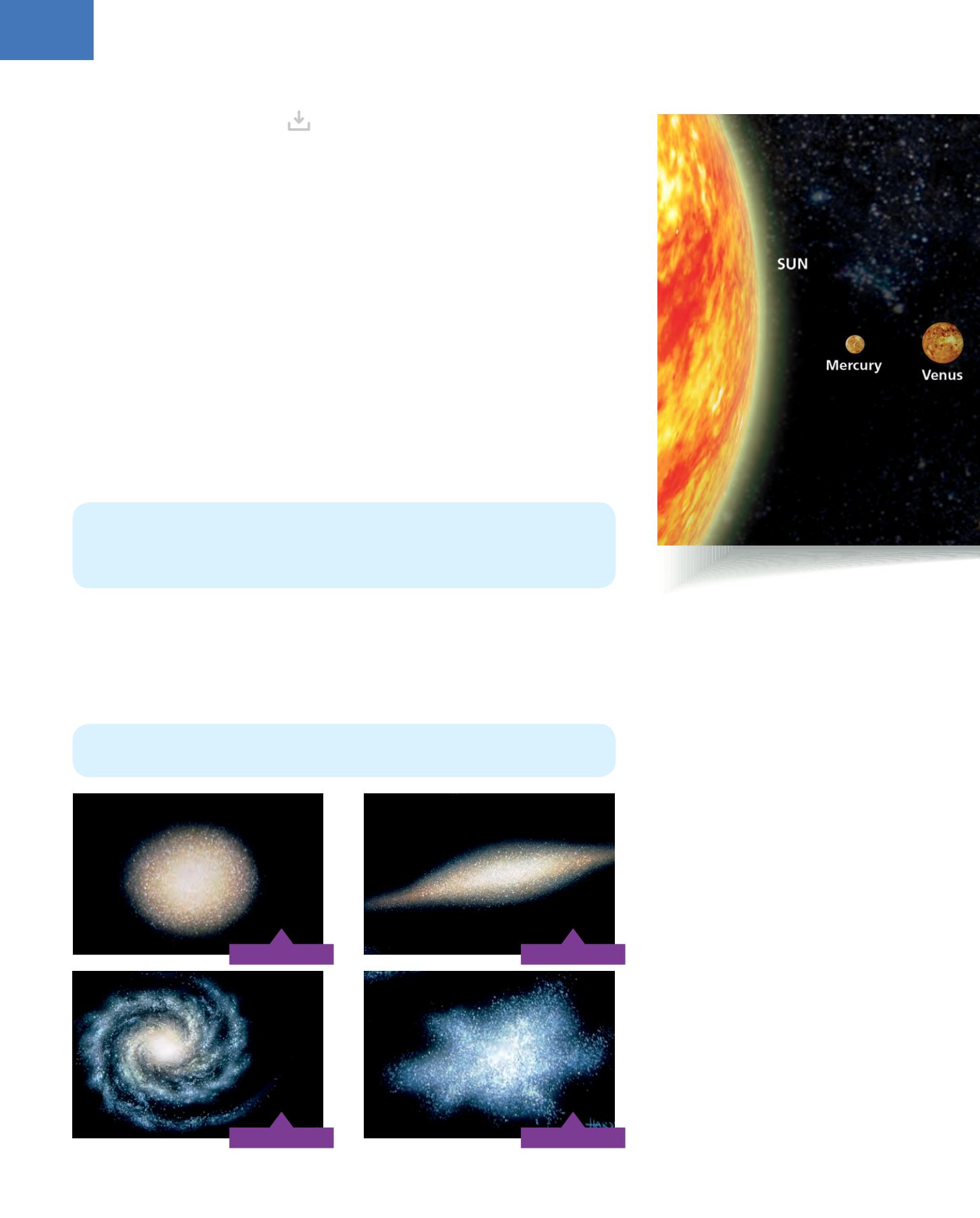
1
12
1. PLANET EARTH
The Earth is an almost perfect sphere, but slightly
flattened
at the North Pole and the
South Pole.
The total surface area of the Earth is approximately 510 million km². Only 30% (about
150 million km²) is land (continents and islands). The remaining 70% (around 360
million km²) is covered by water (oceans, seas, lakes and rivers).
1.1. The Earth in the Solar System
The Earth is one of eight planets that, together with the Sun, make up our
Solar
System
. The solar system is comprised of the following celestial bodies
1
:
❚❚
A star
, called the Sun, which produces its own light.
❚❚
Planets
, which rotate on their axes and revolve around the Sun, and don’t
produce their own light.
❚❚
Satellites
, which are smaller than planets and rotate on their axes and revolve
around some planets. The Earth’s satellite is the Moon.
The distance between the Earth and the Sun is approximately 150 million km. The
distance between the Earth and the Moon is approximately 384000 km.
1.2. Our solar system in the Universe
The Universe is made up of more than a hundred thousand million galaxies. These
galaxies come in many shapes; spherical, elliptical, spiral and irregular. Our Solar System
is located in a spiral galaxy called the Milky Way.
The position of the planets in the Solar System, from closest to furthest from the
Sun, is: Mercury, Venus, Earth, Mars, Jupiter, Saturn, Uranus and Neptune. Pluto,
which used to be included in this group, is no longer considered a planet because
of its small size.
Spherical Galaxy
Spiral Galaxy
Elliptical Galaxy
Irregular galaxy
A galaxy is made up of a combination of planets, stars, gas clouds and cosmic
dust.
1
celestial body:
a natural object located
outside the Earth’s atmosphere


